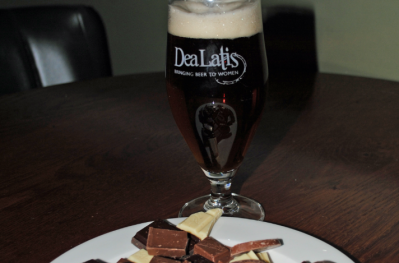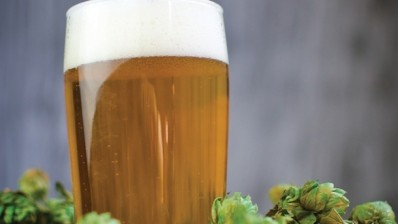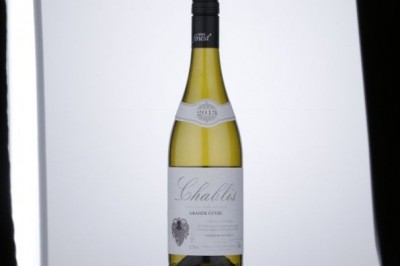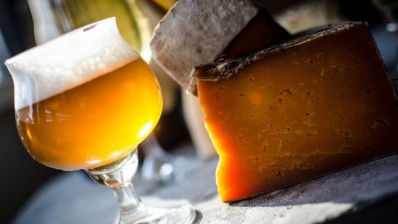COMMENT
Food and beer pairing: evolving the palate
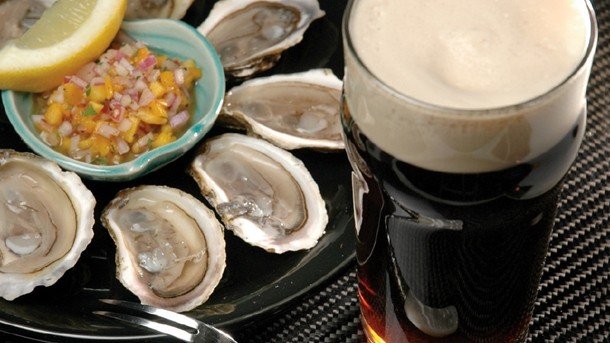
Each pairing offers a different reaction and should build intensity as you go through the menu. The idea is to keep highlighting different areas of the palate so you don’t hit palate fatigue and can move seamlessly through a meal. It’s all about evolving the palate and not getting stuck with common pairings like porter and chocolate or IPA and rose meat.
When you pair chocolate with porter you get a great pairing, but all you’re doing is pairing the chocolate of the malt with more chocolate. You’re not challenging the palate and you’re not giving the beer full justice. And these days, craft brewers are asking us for beers like stouts and porters to be paired with something other than chocolate. A good example of a contrasting pairing is porter and oysters - the acid and salt from the oyster pulls forward the different malts and hops in a beer such as Deschutes Black Butte Porter 5.2%ABV to entertain the palate.
Deep malt flavours
With imperial stouts people often play it safe and match with pudding – maybe a chocolate bread pudding, crème brulee or vanilla ice cream. We pair Founders KBS Imperial Stout 11.2% with venison because the iron in the venison reacts with the deep malt flavours of the barrel aged, imperial stout to settle the palate so you can taste all the different malts and notes of vanilla and bourbon.
With dishes such as duck breast or beef, you need fat to coat your palate and protect against the bite of the beer. Try with sour beers, a rapidly growing beer style that’s bang on trend, such as New Belgium’s La Folie Sour Brown 7% ABV.
A good pairing experience will challenge the palate so you taste all the layers of the food and all the layers of the beer. If you ask customers whether they are looking for something with a little bit of sweetness in it, some light grape notes and a bit of minerality you could be describing a wine, beer or a cocktail. If you then offer a saison people can relate to the flavour notes and be pleasantly surprised.
Fastest growing
IPA is the fastest growing beer category globally but in the culinary arena we often hear people say that hoppy beers don’t go with food. We like to match a double IPA such as Odell IPA 7% ABV with carrot cake to drive the hops to the roof of your mouth while pulling the malts forward. It’s nature’s own Maillard reaction (a chemical reaction between amino acids and reducing sugars to produce browning or seared flavour).
Pairings with IPAs and Pale Ales need to take a delicate approach to the palate. Most people have either had a bad experience pairing with hops or have just simply had a burger and chips. As chefs are focusing more on vegetables right now look to root vegetables such as carrots, parsnips and turnips to hold back the hops just a bit and give the palate a true taste of an IPA.
Cooking method
When pairing with craft beer take into account that the cooking method of the dish can change a pairing. Roasting or sautéing will bring out the Maillard Reaction and take the palate straight to the malt of a beer. Braising or frying will help coat the palate and protect against harsh bites of alcohol and strong barrel flavours. By using different cooking methods the same beer can taste different with two dishes.
Pairing with craft beer is about working each part of the palate and taking care not to overwhelm or tire out the palate. At the end of a proper craft beer pairing your palate should feel relaxed yet satiated.
And a final word of advice. Don't miss your own pairing moment trying to find what someone is telling you. If someone tells you to look for green apples on your palate and you don't taste them, don't train your brain to find that taste. Rather than trying to coach your palate into finding green apples, pay attention to what you taste. You never know - you may just find the next great pairing.
